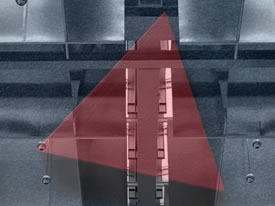 You don’t have to look far to find instances of the world of VUCA. One of the most immediate examples are production supply processes: logistics. Volatile markets, uncertain conditions, complex production systems and ambiguous parameters for decision-making demand new skills.
You don’t have to look far to find instances of the world of VUCA. One of the most immediate examples are production supply processes: logistics. Volatile markets, uncertain conditions, complex production systems and ambiguous parameters for decision-making demand new skills.
A look at our clients reveals that an organization’s logistics sector is increasingly becoming its success factor. Logistics areas are growing disproportionately, transport costs are rising, client and delivery networks are becoming ever more global. Nevertheless, we still frequently encounter the notion that logistics are merely a service at the end of the process chain, not a driver at the spearhead of change.
In reality, we see that logistics has long since moved into the focus of top management. We have noticed a considerable increase in client requests for change accompaniment in logistics processes, particularly so in the automotive sector. Usually, they come together with a demand for qualification and the creation of logistics skills.
At SYNNECTA, a small group of experienced consultants have specialized in change management and logistics process training. Logistics projects put us at the exciting interface between the internal and external worlds, between client demands and delivery networks, between process optimization and plant harmonization. We see the trends of our society reflected in the logistics sectors of organizations: they are an indicator for change and future developments.
With the increasing concentration on key skills (make or buy) and resulting strategies to outsource, delivery chains are more and more frequently based on a division of labour. Sharp competition on global markets, short product life cycles and high client demand foster the steep rise in the number of derivative products: supply guarantees in combination with highly flexible delivery chains are moving into the focus of managerial decision-making.
Supply chain management has thus become an important component of an organization’s planning and management. Elements of logistics structures such as cross-docks, automatic small parts warehouses and tugger trains demand innovative processes, great investments and complex system landscapes as well as, importantly, behavioural change and entirely new standards of management. We have methodical answers:
- Insight images provide us with a view of the entire process chain and clearly depict its complexity.
- Planning games bring the reality of logistics into the seminar room and clarify, e.g., bull-whip effects and how best cost country sourcing and parts availability are related.
- Puzzles help develop an understanding for lean processes, value streams and line back principles.
- Defamiliarization opens up new points of view, networks create synergies.
- Complexity is not confused with complication; we respond with simplicity and standardization.
- SYNNECTA events formats pick up flow, pulse and rhythm.
- Logistics connect: we understand processes and we can do people.
Renate Standfest
